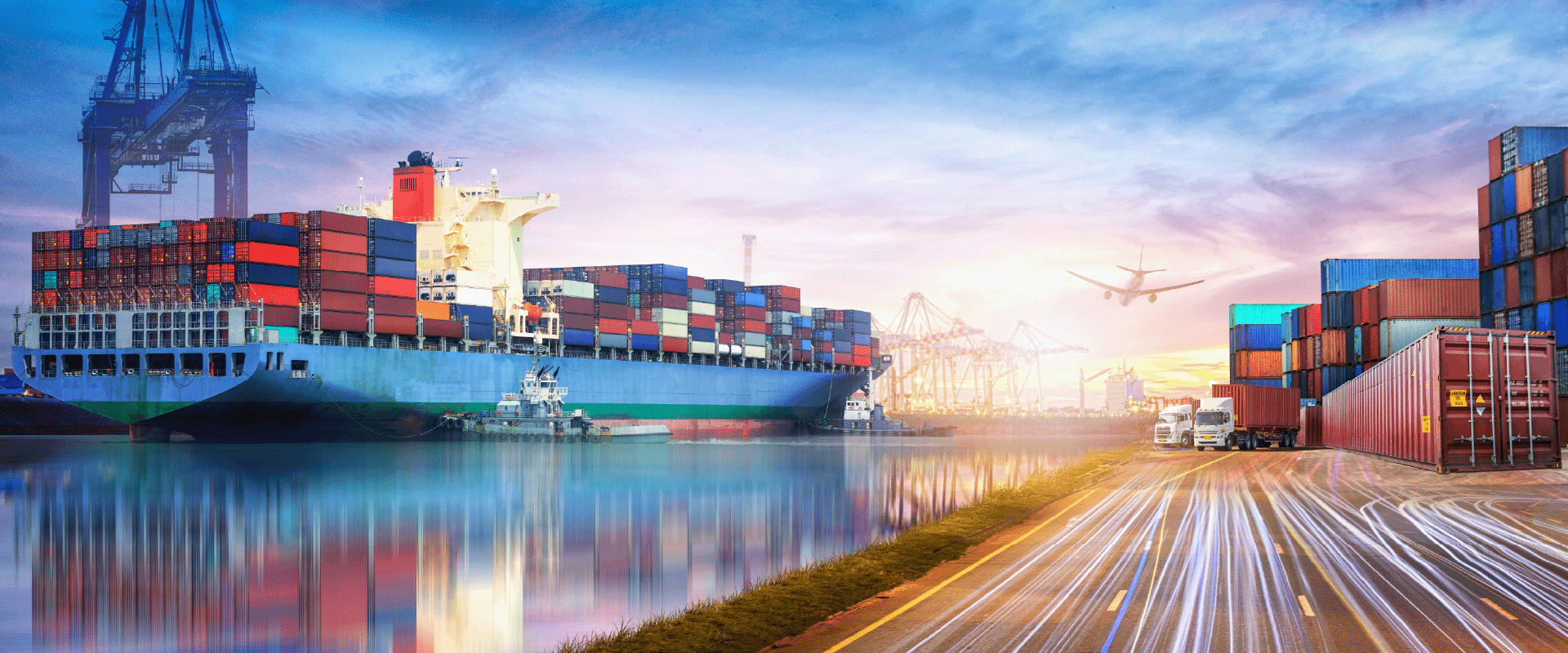
If you’re in the business of transportation, you probably know the ins and outs of national and international logistics in your industry. But even veteran shippers can be surprised at all the different ways transportation manifests itself in the supply chain.
Here, we break down the various ways goods are transported in any given supply chain. We hope to shed some light — and provide a helpful refresher — on this fascinating and complex industry.
Stages of Supply Chain Transportation
Let’s start with three examples of transportation in the supply chain:
- Moving Raw Materials to Manufacturers: Raw materials like lumber, steel, crude oil, cotton or agricultural products need to be transported from suppliers (like farms, mines or ports) to factories and manufacturing plants. Even electronic components like circuit boards may be trucked or flown in from overseas suppliers.
- Moving Finished Goods to Warehouses or Retailers: Once products are made, they need to get from the factory floor to the entities that will sell or distribute them. This often means transporting finished goods to distribution centers, fulfillment hubs or directly to retail stores. For instance, a shipment of snacks might go from a food processing plant to a supermarket chain’s regional distribution center by truck.
- Moving Products Via E-Commerce & Last-Mile Delivery: This is the most visible stage of transportation in the supply chain. Once a customer places an online order, the product moves from a warehouse or fulfillment center to their doorstep. This movement involves last-mile delivery, typically by local couriers or delivery trucks. E-commerce entails everything from a book ordered on Amazon to groceries being delivered from a local store within hours.
Modes of Transportation in the Supply Chain
As logistics operations become more globalized by the day, it’s important to understand the different modes of transportation in addition to the stages of transportation:
Sea freight
Sea freight is the backbone of international trade, as large volumes of goods can be moved long distances. This mode is ideal for bulky, heavy or non-perishable items such as raw materials, manufactured goods, machinery and consumer products. Though slower than other options, ocean shipping is cost-effective for global transportation.
Rail freight
A relatively cheap way to move freight, rail transportation is efficient for moving large quantities of goods over land, especially over long distances when there is no rush. Common rail cargo includes agricultural products, automobiles, construction materials and chemicals.
Air freight
Air freight is the fastest mode of transportation — and one of the newest, with all-cargo commercial flights emerging in the 1940s. While the benefits of transporting goods by air are obvious, this kind of transportation comes with risks, including high unit costs, size and weight restrictions, and security concerns. Electronics, pharmaceuticals, luxury goods and emergency shipments often move by air.
Road freight
For many shippers and carriers, road transportation has been — and will always be — the dominant way of moving goods from point A to point B. Ground freight operations involve the movement of loads on unpowered containers (trailers) towed by powered vehicles (trucks). Types of shipping trailers include standard flatbed trailers, multi-axle trailers, refrigerated trailers and more. Cargo that is transported by trucks ranges from groceries and retail items to construction materials and agricultural products.
Intermodal freight
Intermodal transport combines multiple modes of transportation in handling goods. For example, a container will be transported by a cargo ship to a train, and then from a train onto a truck. Intermodal is often the transportation mode of choice for consumer goods and bulk shipments that have no time constraint.
The Role of 3PL (Third-Party Logistics)
Third-party logistics providers, or 3PLs, help shippers manage the complexities of transportation across all stages of the supply chain. They act as intermediaries between shippers and carriers for all sorts of functions: freight booking, route planning, warehousing, inventory management, last-mile delivery coordination and far more.
By outsourcing to a 3PL, companies can reduce costs, improve delivery times and gain better visibility into their supply chains, all without having to oversee every logistical detail themselves.
Ryan Transportation: Streamlining Your Supply Chain
Since Ryan Transportation was founded over 35 years ago, we’ve made it our goal to help companies throughout North America take control of their shipping and improve their supply chains. Our network has expanded to include carriers across all modes and equipment types, ready to transport freight throughout the entire nation, 24/7.
Reach out to our team to set up a consultation today!